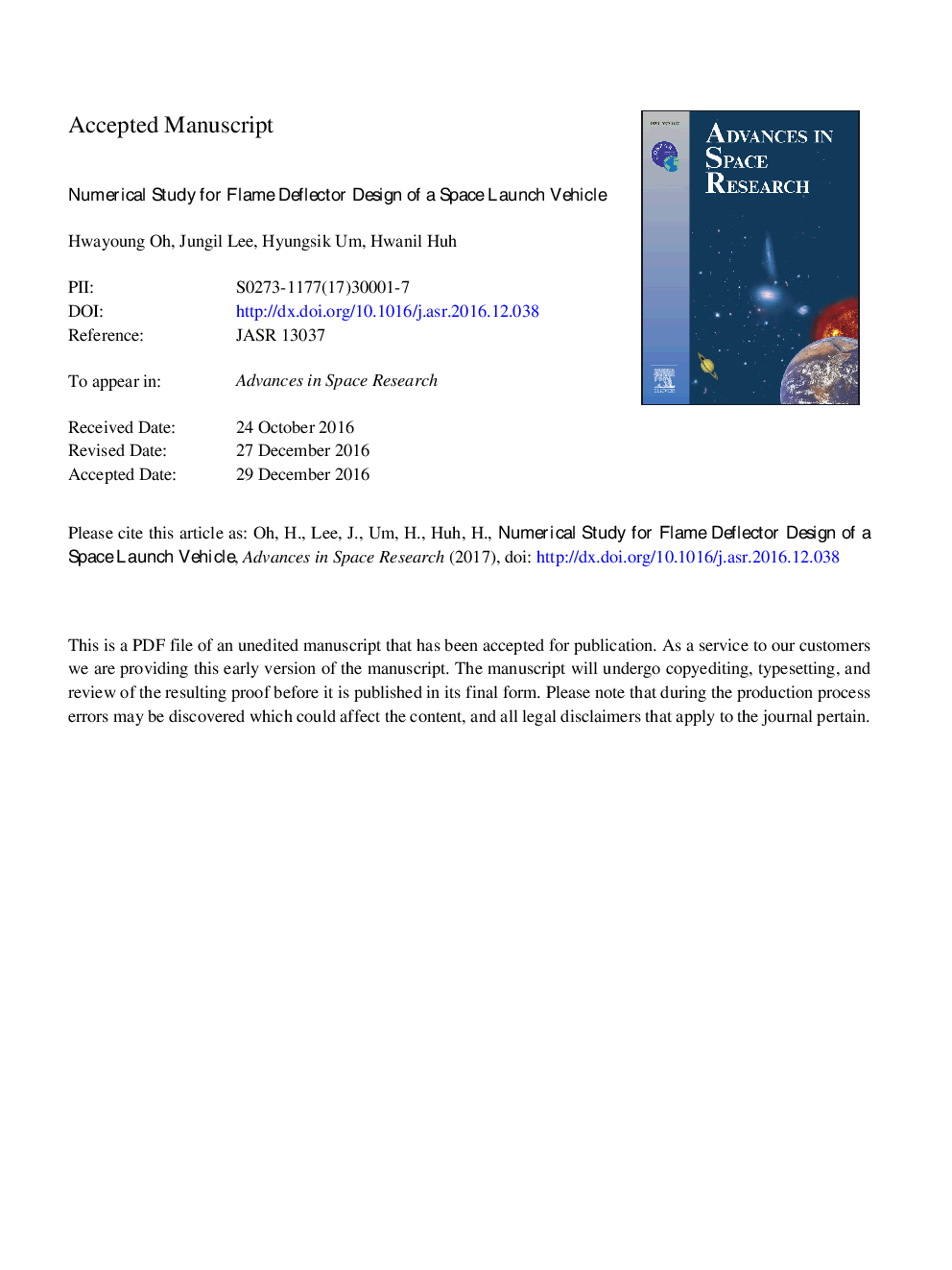| Article ID | Journal | Published Year | Pages | File Type |
|---|---|---|---|---|
| 5486542 | Advances in Space Research | 2017 | 25 Pages |
Abstract
A flame deflector is a structure that prevents damage to a launch vehicle and a launch pad due to exhaust plumes of a lifting-off launch vehicle. The shape of a flame deflector should be designed to restrain the discharged gas from backdraft inside the deflector and to reflect the impact to the surrounding environment and the engine characteristics of the vehicle. This study presents the five preliminary flame deflector configurations which are designed for the first-stage rocket engine of the Korea Space Launch Vehicle-II and surroundings of the Naro space center. The gas discharge patterns of the designed flame deflectors are investigated using the 3D flow field analysis by assuming that the air, in place of the exhaust gas, forms the plume. In addition, a multi-species unreacted flow model is investigated through 2D analysis of the first-stage engine of the KSLV-II. The results indicate that the closest Mach number and temperature distributions to the reacted flow model can be achieved from the 4-species unreacted flow model which employs H2O, CO2, and CO and specific heat-corrected plume.
Keywords
Related Topics
Physical Sciences and Engineering
Earth and Planetary Sciences
Space and Planetary Science
Authors
Hwayoung Oh, Jungil Lee, Hyungsik Um, Hwanil Huh,
